Episode 15: It’s Not Just Delivery — It’s Partnership
What do enterprise clients really expect from their technology partners, and how has that changed over the years? In this episode, Anni speaks with Olesya Khokhulia, VP of Global Enterprise Accounts at DataArt, about the evolution of client relationships, the quiet signals that build trust, and what it takes to stay relevant in an environment where expectations are always shifting. A reflective conversation about listening, partnership, and the future of tech collaboration.
Key Takeaways
✓ Historical Context: Over the past decade, client expectations have shifted from vendor relationships to strategic partnerships. While core needs (revenue growth, efficiency) remained consistent, technology adoption accelerated significantly. Enterprise procurement cycles were previously lengthy, with innovation moving at a measured pace and emerging technologies taking years to implement.
✓ Current Landscape: Speed dominates modern client-vendor relationships, with enterprises demanding immediate efficiency. Value, shared risk, and flexibility are now essential requirements. Data-driven decision making represents ~30% of technology budgets, with organizations requiring actionable insights before implementation. New specialized roles are emerging to drive continuous efficiency improvement.
✓ Anticipated Trends: Enterprises will seek both stability and increased speed/flexibility. Development partners must operate at higher abstraction levels, shaping ideas rather than just executing requirements. Strategic conversations and frameworks will become central to partnerships. Trust remains fundamental but will increasingly rely on data-informed decisions and shared outcome responsibility.
Transcript
Anni Tabagua: Welcome back to BizTech Forward. I'm your host, Anni, and today's episode is all about something that can make or break any project: understanding what clients really want. What do clients really want from their tech partners these days? How is that different from 5 to 10 years ago? And maybe the biggest question: How can companies keep pace?
To discuss this, I'm joined by Olesya Khokhulia, VP of Global Enterprise Accounts at DataArt. She's been in the industry for over 20 years, working closely with enterprise clients across different industries. She has loads of experience and actually has a front-row seat to these changes. It's always such a pleasure to have you on the show. Hello and welcome.
Olesya Khokhulia: Hi. Thank you for the introduction. I'm glad to hear from you again. Let's start.
Anni Tabagua: Olesya, with your extensive experience, there are many questions we can ask you, but let's start with the basics. You work with many different companies across different industries. From your perspective on the high level, how have client expectations shifted in the last 5 to 10 years?
Olesya Khokhulia: Well, it's a tricky question, and I'll explain to you why. Usually, when a customer comes to a vendor or partner with a request, they want to accomplish one of two goals. The first goal is basically to get revenue faster - the revenue acquisition metric. From the sales perspective, sometimes customers come and say, "We probably do not focus on revenue acquisition speed for the moment," or "We are not focusing on transforming our business, but we really want to optimize our business in the usual operations." So we are more focused on efficiency.
Sometimes, it's a combination of these areas. Was it the same ten years ago? I would say yes. Did different factors influence this process ten years ago? I would say yes; they're quite similar to what we have at the moment. Everyone keeps saying the market is tough.
What changed from that perspective? Everything is becoming faster. So speed is becoming a key factor. And customers expect this speed from vendors and development partners. They expect efficiency from day one. If you look deeper at how things happen inside enterprise customers, there is usually room for improvement in larger organizations. There are some legacy systems from a business perspective, a business process perspective, and a technology perspective. There are some systems that require different approaches, some new technologies are coming, and systems require some transformation. It could be mergers and acquisitions that trigger a transformation.
When customers are thinking about transformation internally, they usually think, "We have to have the budget for that." The tricky thing is that the budget is usually spread between different departments and different budgets. So it's very hard to get a budget to sponsor the transformation process. So first, you have to identify what you want to transform. Is it optimization for business-as-usual processes, or is it some innovation program? And after that, you have to come to an alignment between different stakeholders within your organization. And it may take ages.
So, imagine this miracle happens. You get the budget, then you choose a development partner. Logically, what would you expect from a development partner? First of all, you would expect efficiency from day one, right? Because you made the commitment in front of your peers. You made the commitment in front of your stakeholders that you will achieve results in your transformation, or your optimization will bring a quick return on investment. So you want to prove efficiency from day one, to start showing the results to multiple interested parties within your organization.
Second, you want some flexibility because even if you planned everything, you understand how this transformation should be done in your organization (which is never the case, to be honest). But still, even in this ideal scenario, you can't plan everything, right? So you require flexibility and what's called "skin in the game" from your development partner. If some challenge or some unpredictable things happen, you expect your partner will be truly a partner to you and be with you in good times and bad times.
Some projects in this transformation are quite complex and you expect speed because while you get this budget, while you get alignment that "Yes, this should be a goal for the nearest future," the transformation to optimize the business, you have to understand that it may change every second because the speed of all the processes around us right now is extreme. So you can't really plan for the long term, even for some transformation or for some project.
That's why speed is becoming a key factor. So, to answer your question: Was it the same as ten years ago? Those factors were there ten years ago, but speed and complexity set new standards right now.
Anni Tabagua: Thank you so much for painting such a detailed picture. That really helps. I have a potentially ignorant follow-up question, but since speed and efficiency are so important, clients expect everything to go lightning fast. At the same time, it takes ages to get budgets approved. So...
Olesya Khokhulia: You see a contradiction here?
Anni Tabagua: Yeah. And I wonder, was it a bit easier back in the day with budgets? Has it become more difficult to approve budgets? Are there more departments now? The budget thing interests me right now a lot.
Olesya Khokhulia: It's a good question actually. I would say it was the same. But right now we definitely have new roles. For example, some companies introduce Chief Engineering and Productivity Officer. It's a dedicated role with the responsibility to ensure productivity and efficiency constantly meets the new standards, and monitor that all the initiatives under this umbrella actually bring results.
Speaking about budgets, it's very different from customer to customer. Some environments, like automotive or healthcare, are very conservative, and each decision requires different approvals. This process can take ages. Sometimes, a very difficult, formal procurement process adds complexity to this transformation. However, some companies are more agile.
There is a contradiction, which is another challenge that our stakeholders face and that we have to respect and understand. From one standpoint, these new stakeholders see that their organization requires some project or transformation to happen. Otherwise, they may lose position in the market. They may not prove their efficiency in front of stakeholders, investors, or their board of directors. They may not get the conversion of customers they want to have. So different factors that influence their business.
As business people, they understand that they need to start some transformation urgently. And even if maybe all the requirements are ready internally, everything is aligned and planned, but nobody can speed up the procurement process. Nobody can speed up the budget allocation process inside the organization. And it's a huge challenge. It also requires flexibility from development partners. Sometimes they start doing something even before the whole budget is approved. Sometimes, you may invest in some proof of technology or proof of concept to show stakeholders, "Yes, this particular program will bring the benefits that you discussed before, during the requirements gathering process."
So you have to be a partner in this process for your customer as well. Was it more formal before? Probably not. The complexity of all the processes and systems, as I said, was different. Right now, we have a new standard. Before our "new normal," what is normal now would be treated as super complex.
Anni Tabagua: I see. You mentioned this intriguing new role. I love how it sounds - Chief Engineering Productivity Officer. I wonder, have you ever worked with a Chief Engineering Productivity Officer? Like, did you have a case where somebody told you, "Hello, I am James, Chief Engineering Productivity Officer"?
Olesya Khokhulia: I worked with people who didn't have the title, but they had such responsibilities. Several of our customers right now have this, like the Chief Engineering and Productivity Officer. Maybe it was introduced one year before; I don't know, but I started to see that more and more often.
The title may be a bit different. Chief Personalization Officer, Chief Optimization Officer, Chief Engineering Productivity Officer, but they are all under the same umbrella. They try to understand what will make businesses work more efficiently, bring more value to their customers, and be more profitable, because all businesses, in the end, should be profitable. So this role's essence is to focus on such things.
Anni Tabagua: I find it really interesting. On the money topic, I wonder how often do you hear from clients: "Hey, tell me about the value that you're going to bring me as a development partner for my money?" How often does the "value for money" sentence come up in your conversations? I imagine a lot, but I don't know.
Olesya Khokhulia: 100% of cases, always. It's always like that. I can't say that it wasn't like that before. Maybe terms were different, but right now, "value for money," "skin in the game," "flexibility," "sharing models" - it's becoming the new normal for business discussions. I can tell you that my last five requests for proposals were all about value for money.
At some point, I've done the research. I asked my ex-customers and my network, "What do they mean by value for money?" Because from one standpoint, it's obvious. From another standpoint, you never know what really stands behind this expectation. And almost all of them gave me a very simple formula. The results are actually divided by the costs. So, what is the value for money? It's what you get for your money—it's that simple.
Again, for different companies, the devil is in the details because, for different companies, different factors may be valued or become a priority in their strategy. And you have to understand your customer, put yourself in the shoes of your customer, and try to propose a solution that will definitely help them with their goals and address their concerns and expectations when it comes to value for money from a vendor or development partner.
Anni Tabagua: Is there anything that you imagine that you would never have heard from a client 5 to 10 years ago, and right now you hear it a lot? Maybe something about trends?
Olesya Khokhulia: Let me think.
Anni Tabagua: Maybe you hear a lot of buzzwords.
Olesya Khokhulia: I think that maybe you're right. If you are speaking about buzzwords, I can't say ten years ago, but maybe seven years ago, even five years ago, a trend was coming, and it was starting from a buzzword. At some point, everyone was speaking about AR/VR. I remember how often I was conversing with my customers, saying, "Look, guys, you have to introduce new technology. For example, AR/VR is a super cool thing. Let's discuss the potential. Let's brainstorm business cases."
The customers were always very practical, especially enterprise customers. They'd say, "Olesya, what about the production cost of this solution? All these glasses, trainings, everything supporting new models of glasses is coming." At the time, it was a big issue. So everyone was speaking about AR/VR, partly trying to understand how it may fit their business, partly just using buzzwords to be cool, and partly trying to allocate some budget for innovation under this umbrella.
There are different reasons for people to speak about AR/VR, but it was very difficult to put that into production. If you are looking at current trends and current buzzwords, they're all very practical. For example, AI also requires some preparation and transformation inside the company. But when you are ready, it's not about the production cost of something. You just do it, and that's it, and you immediately get the results.
So I would say that what really changed over the past five years is that new trends and technologies started to get to the market faster. I mean, not the market in terms of everyone speaking about it and everyone having an opinion, but to production cases.
Anni Tabagua: You explained so beautifully before about the key things that clients need and look for in their tech partners today. And I wanted to reiterate it again for our listeners and just make sure I didn't miss anything. So you said that the most important things were speed, speed, speed, efficiency, flexibility, and being able to give some proactive advice. And also, you did mention that today, you kind of have to actually be a partner rather than just a vendor, a trusted partner.
I wonder if you could tell us a bit more about how important trust is. Does it also take ages to build trust? Is it key for the client to actually see their tech partner as a partner they can trust and rely on, or is it more transactional?
Olesya Khokhulia: Well, for me, business is always a relationship. So I've never seen a successful business case without a successful relationship and trust behind it. In my opinion, trust has always been a key factor. And my vision is that you have to spend time with your customers. You have to be in the audience. You have to understand how the organization is working. You should know them as people, as your friends. You should spend time together, even in a formal, conservative environment, when sometimes informal communication with the partner vendor is not allowed.
Still, even here, you must build the relationship because it always brings better results than just a vendor-customer relationship. There are real people behind it. So I would say trust is the most important thing. But then you have to prove yourself. This is what competition is about. There are many good companies, and I always respect the competition. There are many good companies that basically do the same. They may be very successful development partners for particular customers, but it's just a matter of chemistry - whether you have chemistry with their company product, the mission, or the culture.
If you have many common factors and common beliefs, then you will be successful in this collaboration. That's my philosophy.
Anni Tabagua: There are so many things to unpack here. Olesya, I'm very curious, since we're on the topic of trust, also the topic of responsibility - do you think that you can outsource responsibility? Can clients today simply count on their vendors or tech partners to get things done, and they can just chill, relax, and know everything is under control? Or is it a two-way street where clients also have to be involved in managing the program? None of it is that simple, but I wonder, can they just outsource responsibility? In simple words?
Olesya Khokhulia: Imagine you're a development partner and you are getting a request saying, "Guys, we want you to take full responsibility for our business." Is it possible? Are you able to do that? First of all, it sounds suspicious, right?
Answering your question seriously, if you haven't had any sort of cooperation with this customer before, the customer will come to you saying, "Guys, can you do everything for me? And take responsibility for the results?" In my opinion, even if the vendor agreed to that, they would fail. It's not possible. I always respect the complexity, all the things that you have to know. As I said before, you have to have this chemistry. You have to have a relationship. You have to understand how the customer organization works, how their engineering functions, and what the constraints are - all these details you can't get without collaborating with each other for many years and meeting in person often.
So I would say that if you were working with a customer for five-plus years, delivering together large programs in different roles - sometimes it may be just team expansion, sometimes you may play a key role, sometimes you may be product owner, program managers, or have architects who develop the system from scratch - different roles. And at some point after this five-plus years of cooperation, the customer comes to you and says, "Look, guys, can you take more responsibility?" Not all responsibility for the result, but more responsibility. No problem, I say yes.
That's the true governance model for me. It's like a kind of joint venture when stakeholders from both sides are responsible for the results. They know how to measure the results, what the acceptance criteria are, why they need them, their long-term and short-term goals, and what plans they have, like responsibility for the results or a risk-sharing model. That's what I call a strategic partnership.
Anni Tabagua: It makes so much sense. Not all responsibility, but more responsibility. Okay.
Olesya Khokhulia: It's exactly about the level of responsibility and understanding the customer organization. It's always a time of cooperation when you get this knowledge and when you can confidently say, "Yes, guys, I will not disrupt your business. I will make your business better with you, but it's your business. We are experts, but it's your business." We respect the complexity of your organization, the history of your organization, and the political environment, if you want. So with all this respect, you can get more responsibility, but you can never take all the responsibility.
Anni Tabagua: Great answer. Responsibility, trust, proactiveness, honesty, and feedback. Which makes me wonder, Olesya, does it happen a lot that you interact with the client and they ask the tech partner to do one thing and then it turns out they actually need something completely different? And if so, what's the best kind of manner or etiquette - would it be to be honest with your client, even if...
Olesya Khokhulia: Even if you are losing money? I mean, honesty is just a part of our professional approach because what you need to do is solve customer business issues, pains, transform organizations, and support the optimization of some processes. You have to help customers achieve their goals.
For example, a customer comes to you and says, "Look, we want to play with new technologies. We even got a budget for that, a good innovation budget. Our stakeholders really want us to show a business case using AI, for example." This is the most typical case nowadays. What you can do - you can say, "Yes, sure, what's your business case?" Or you can brainstorm business cases together.
After that, when you start looking at what's really happening with data in the customer organization, you may find out (and this is a real case, it happens with us all the time, the most typical one) - you understand that they are not ready. Their data is not ready for introducing AI. So they can't jump over one step. They have to do their homework before starting some fields of automation or optimization.
And we always say, "You're not ready." As simple as that. You can never invent some arguments for why we can't do it. We just say it straightforwardly: "You're not ready. You have to do this data project first. After that, brainstorm business cases, and after that, we'll do your proof of technology or anything you want. But before that, step one, step two will be just a waste of money."
And customers really appreciate this feedback. I've never seen a case where a customer said, "Oh, I didn't expect such results." They all say, "Guys, super, thanks. It's good that at this moment I didn't spend time and money of my team without any results, which I would not be able to prove in front of the stakeholders."
Anni Tabagua: Thank you for mentioning this magical word. I wanted to ask you about it just now: data.
Olesya Khokhulia: Data. Okay.
Anni Tabagua: I feel like we need to talk about data a bit because that's all I hear. All the media requests that I monitor have to do with data, one way or another. Everybody says they want to be and have to be data-driven. Data is non-negotiable these days, and I'm sure it's true. But I just want to hear what you think about what it means for enterprise clients.
Olesya Khokhulia: It's definitely mainstream. If you ask me what budget enterprise customers spend on data and analytics projects, I would say 30% nowadays or more. So all the customers are doing something with their data. It very much depends on the maturity of the organization, of course. Some just start this journey, some refine this journey as they introduce process automation and optimization to make organizations more efficient.
But it's definitely a trend. Everyone expects data to become actionable. Even documents should become actionable. I remember I was having a conversation with one of our customers two years back, and they said to me, "Olesya, we have to introduce a very modern loyalty program to increase the conversion of customers." I said, "Okay." And they started to brainstorm what it might be.
But after that, I said, "Okay, what is the base? I mean, what data will we use? Why do we think that this will increase conversion?" They said, "We really don't know because we have tons of data and nobody analyzed it." I said, "Yeah."
So it's another example of honest feedback. Customers are not ready for some projects. They said, "Yeah, but then probably we have to switch the topic and talk about data." Building loyalty programs or some other programs without understanding the base, history, and trends inside the organization is just a waste of money.
So, I think when everyone understands the importance of AI, automation, and efficiency, data is becoming a key factor because it's the base for everything. Even us – look at our organization. We also went through the same transformation. We're also a global organization with 30-plus locations – a very complex structure, distributed teams, and tons of data that we historically gathered with nobody analyzing it. Some processes are more mature, some less mature.
We are also an enterprise, and we are also going through this transformation. And then we started getting insights from our historical data. Sometimes you see that some decisions seem very obvious. But when you look deeper at what your data brings, you understand that you have learned. I've had that multiple times in my career when I thought, "Okay, I know everything about this organization." But then you look at the figures and you discover you were completely wrong. Your sense of the situation was incorrect.
That's why I think that this is super important. I'm data-driven by definition. So call me data and figures and numbers the most important thing, except you.
Anni Tabagua: So relationships and data.
Olesya Khokhulia: Relationship and data. Yeah. That's my model.
Anni Tabagua: I like that. Just want to look into the future a little bit before we wrap up. Where do you think this all is going? What do you think enterprise clients might expect more of in the future? Is it like more trust, speed, and data, or just to speculate?
Olesya Khokhulia: I would say enterprise customers and all customers always expect stability from development partners. This is one of the key factors that we didn't discuss, but it's becoming increasingly important. There is a contradiction because speed, complexity, everything that's happening around us right now, doesn't look very stable. However, the end customer expects stability from development partners.
Also, what they expect – I think they expect development partners to help shape their ideas. And maybe it's also a difference with what happened in the industry even five years ago. Before, customers would come with a particular request, which was already shaped inside their organization. Right now, again, getting back to the normal budgeting process and speed of competition, sometimes they don't even have much time to shape the idea.
They have a feeling that something may transform their organization and make it more profitable – an Agile approach, for example. But they don't have the capacity or budget to describe it or make a proof of technology or proof of idea. So, usually right now they're coming to a development partner and saying, "Look, guys, can you somehow help us to brainstorm this idea? Can you be a moderator? Can you provide options from your experience, what's available on the market, and what you've seen in different corporations with different customers? Maybe it will give us some new ideas. Also, can you look at our data together with us and try to understand what we see there? What might be the actions that trigger different approaches?"
My colleague once said to me, "Olesya, right now, customers expect not just conversations, but conversations about conversations," which is really true. And I keep reminding myself when I'm speaking with customers or analyzing customer requests. They expect conversations about conversations, and we have consultants who can support such conversations and help customers shape their ideas. We have different frameworks that can support this process.
But in essence, I think it will be a trend that development partners and vendors should be prepared to go up one more abstract level. And it supports the same evolution of complexity. So the New Normal will be on more abstract levels. And it's now definitely on one more abstract level than it was five years ago.
Anni Tabagua: Olesya, thank you so much. It was really a great pleasure to talk to you today.
Olesya Khokhulia: Thank you. And thank you for inviting me.
Anni Tabagua: And this is a wrap for today. If you enjoyed this episode, please subscribe, rate, share, like and tell us what you think. Reach out to us at biztech.forward@dataart.com. That's all for today, and we'll see you next time. Thanks for tuning in to BizTech Forward. If you enjoyed the podcast, please subscribe and share to help us reach more listeners. Thank you for being part of the conversation. See you next time.
About the Guest
Olesya Khokhoulia is an executive with more than 20 years of experience working with large enterprises and helping them to grow, adapt, and solve real-world challenges through smart use of technology. As VP of Global Enterprise Accounts at DataArt, she works closely with major clients to build strong, long-term partnerships and deliver solutions that make a difference. She’s deeply interested in emerging technologies and R&D, and brings a clear, practical approach to digital transformation.
Olesya is known for her focus on lasting impact, her understanding of complex enterprise needs, and her drive to support clients through constant change and growth.
Check Out All of Our Episodes
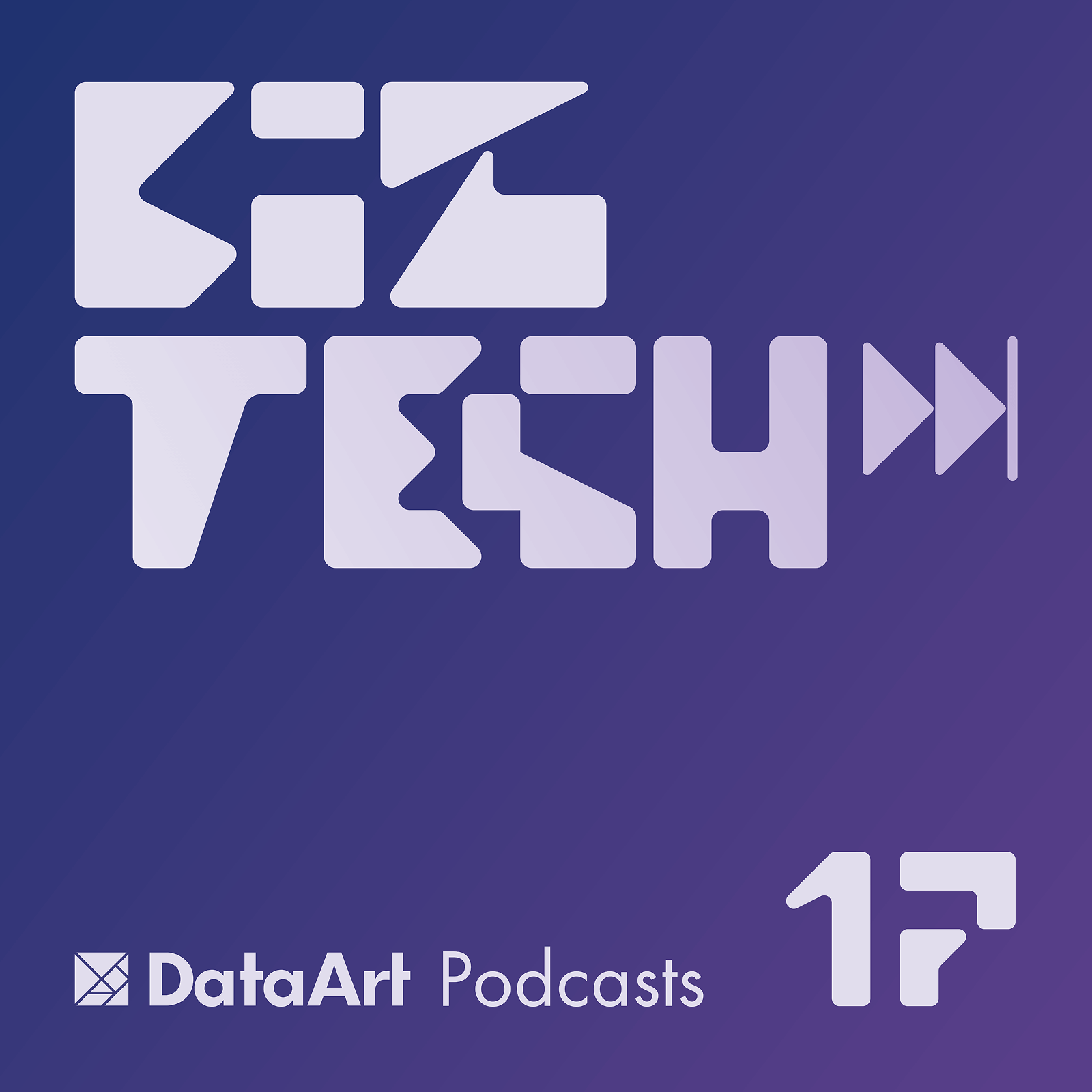
In this episode, Anni sits down with Alistair Wandesforde, SVP at DataArt, to see what companies say about their AI capabilities and what's really happening on the ground.

Season 2's most controversial moments! Eight tech leaders share their unpopular opinions on AI, recruitment, learning culture, market competition, and more.

We wrap up Season 2 with episodes 13-16! Featuring Doron Fagelson's fascinating look at how data is transforming art commerce, Greg Abbott's insights on the tech behind your next trip, Olesya Khokhulia on enterprise partnerships beyond just delivery, and Alexey Utkin's brutally honest conversation about data reality.

Join host Anni Tabagua for a Season 2 recap covering episodes 9-12! Featuring discussions on evolving client expectations, scaling learning culture, Latin America's tech boom, and the current state of tech talent.

In this episode, Anni sits down with Alexey Utkin, Head of Data and Analytics Lab at DataArt, for a candid conversation about what’s really going on in the world of data.
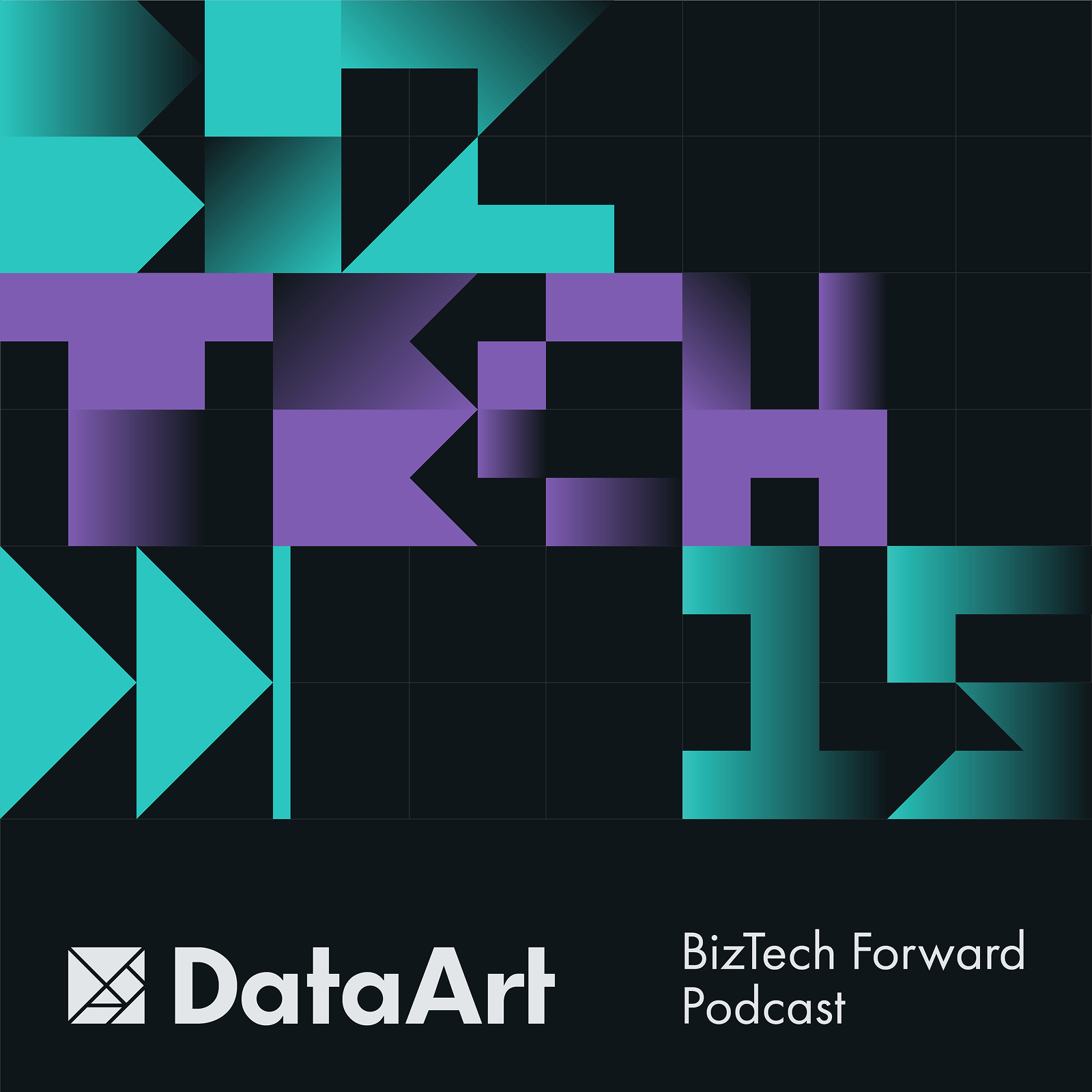
In this episode, Anni speaks with Olesya Khokhulia, VP of Global Enterprise Accounts at DataArt, about the evolution of client relationships, the quiet signals that build trust, and what it takes to stay relevant in an environment where expectations are always shifting.

Travel is back — but it’s not the same. In this episode, we sit down with Greg Abbott, a veteran of the travel tech world with over three decades of experience, to talk about how the industry is evolving.

From ancient artifacts to AI-curated collections—art is evolving, and fast. In this episode, host Anni chats with Doron Fagelson, SVP of Media & Entertainment at DataArt, to explore how technology is transforming the art world, from online marketplaces to data-driven personalization and virtual galleries.

In this episode, host Anni chats with Julia Zavileyskaya, Chief People Officer at DataArt, about the biggest hiring trends, AI’s role in recruitment, and what really keeps employees engaged." Please find the episode's cover attached.
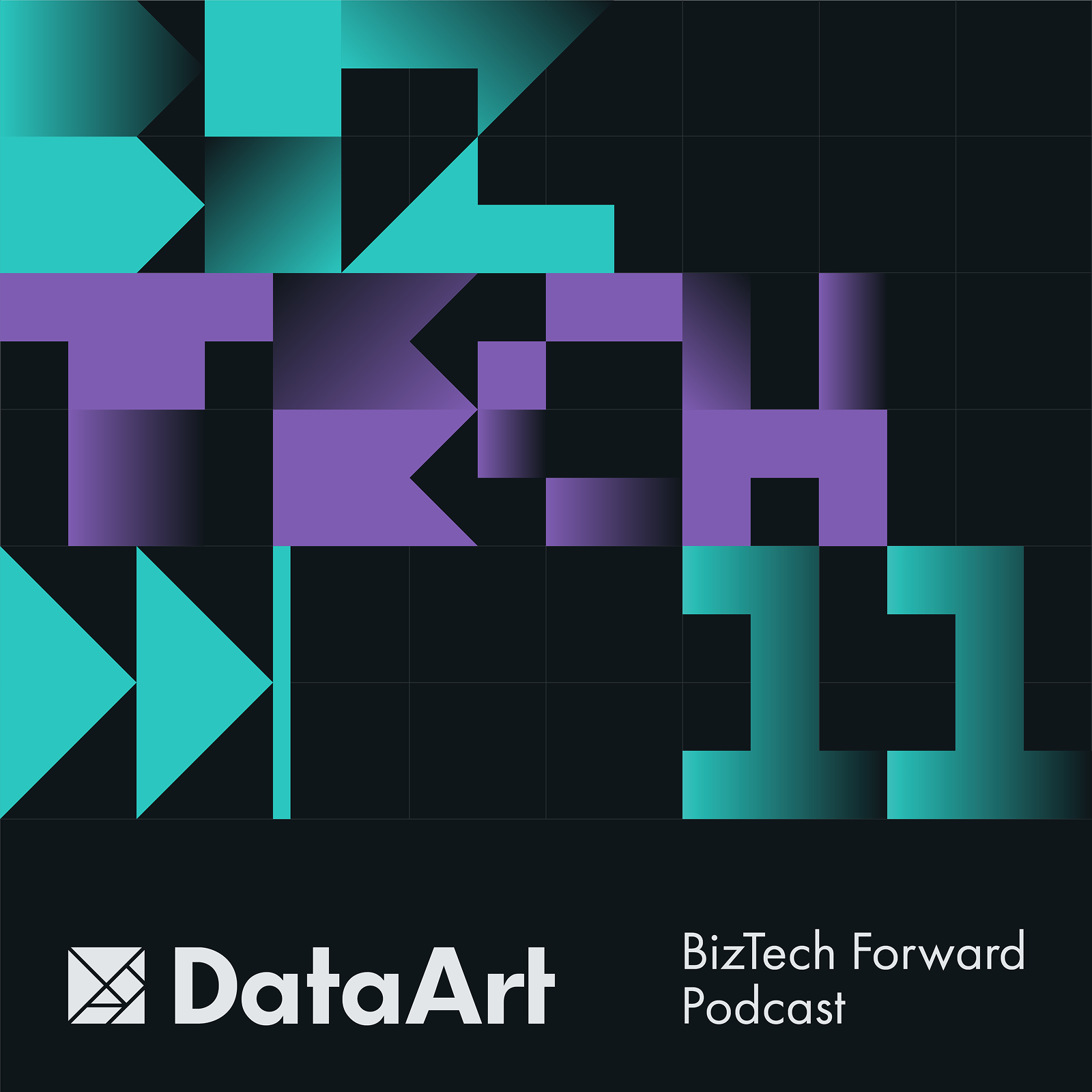
In this episode, Anni sits down with Marcos Mauro to discuss what’s fueling Latin America’s tech boom, how businesses and clients are adapting, and why it’s more than just an emerging market — it’s a global leader in the making.
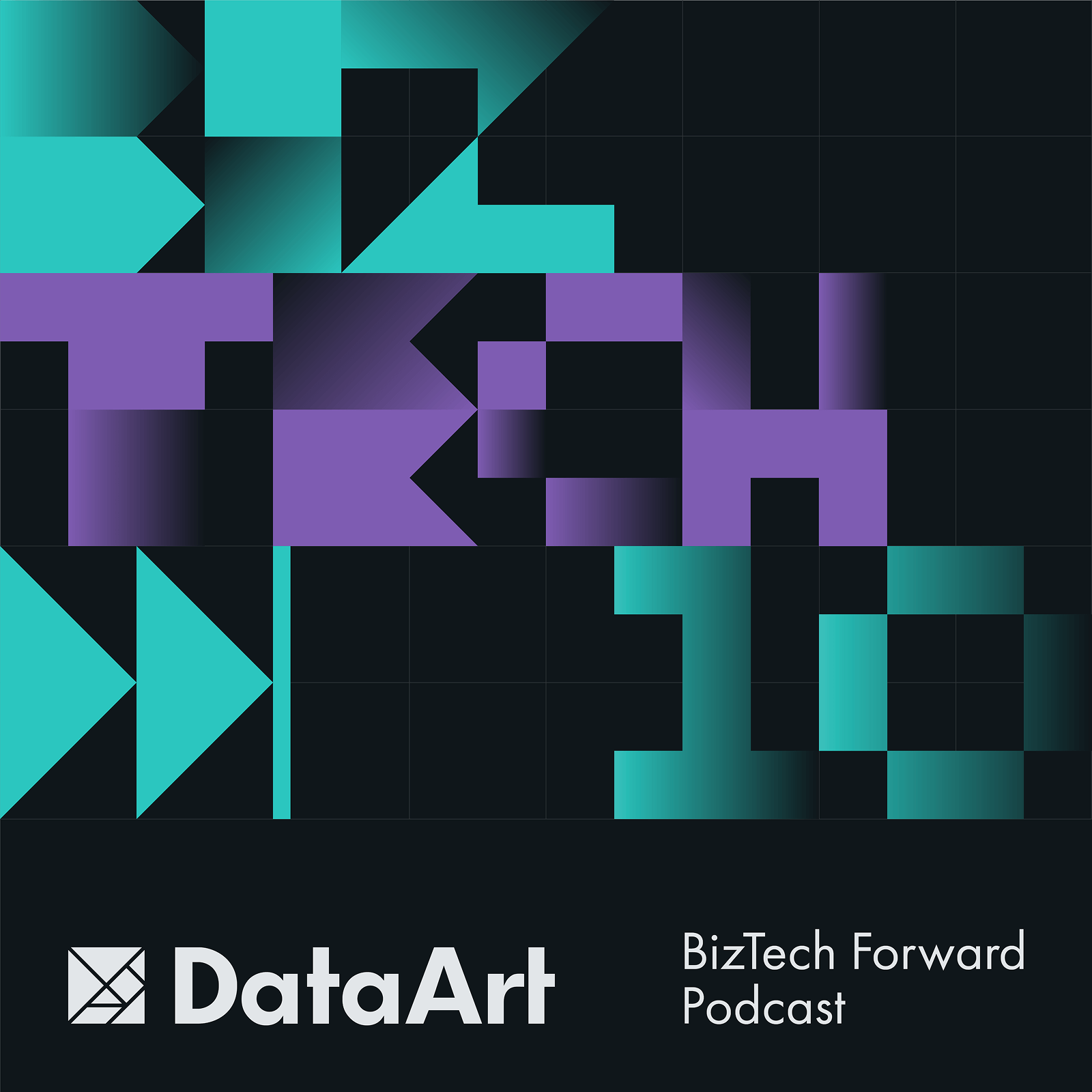
In this episode of BizTech Forward, Anni chats with Maryna Melink, Head of Learning and Development at DataArt, about how companies can create a culture of continuous learning, scale it across thousands of people, and deliver real business value.
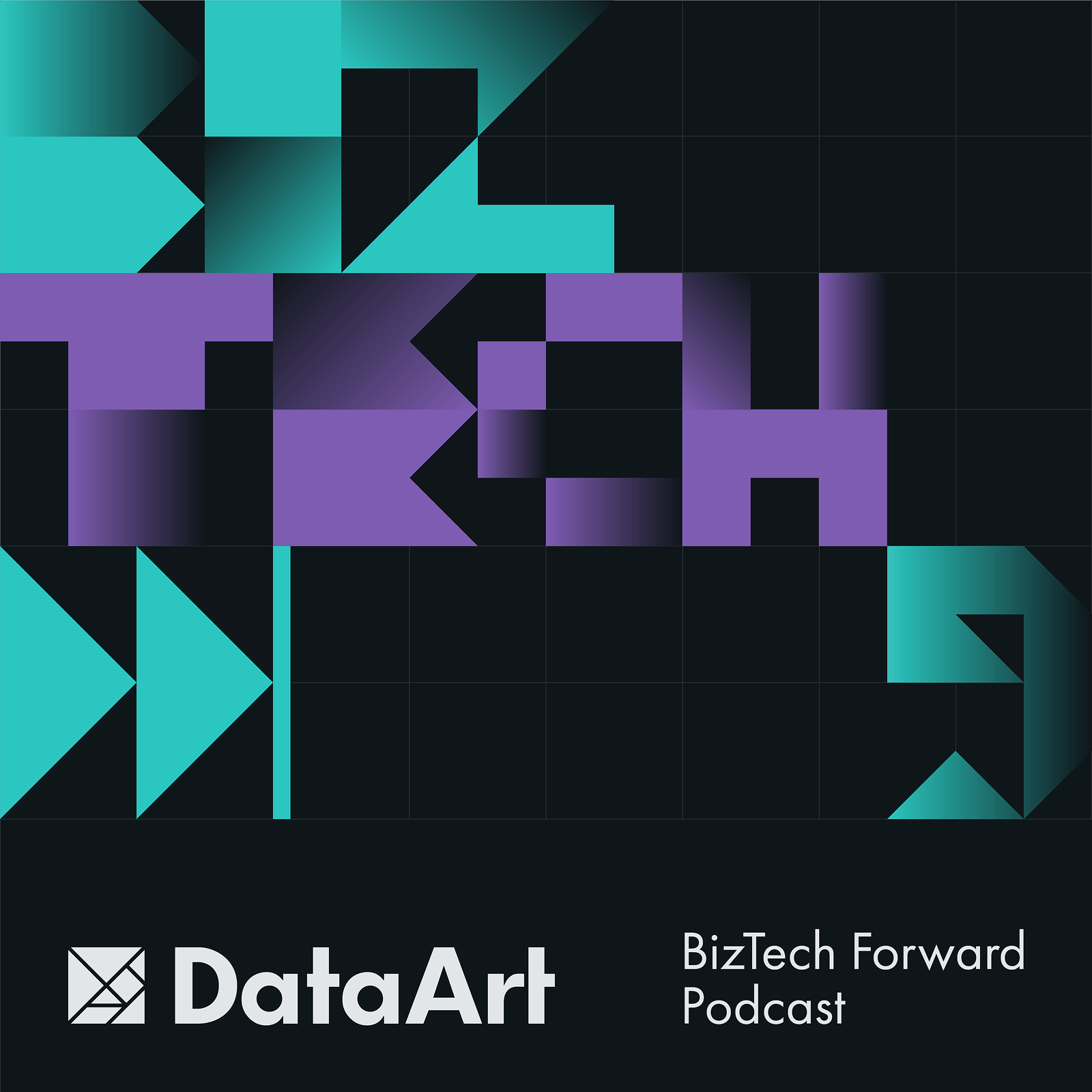
In this episode of BizTech Forward, Anni sits down with Mike Peterson, Advisory CTO / CIO, Mentor, and Coach, who discusses how client expectations from IT vendors have evolved over the past decade, what clients miss from the ‘old days,’ and how vendors can stay ahead in an ever-changing tech landscape.
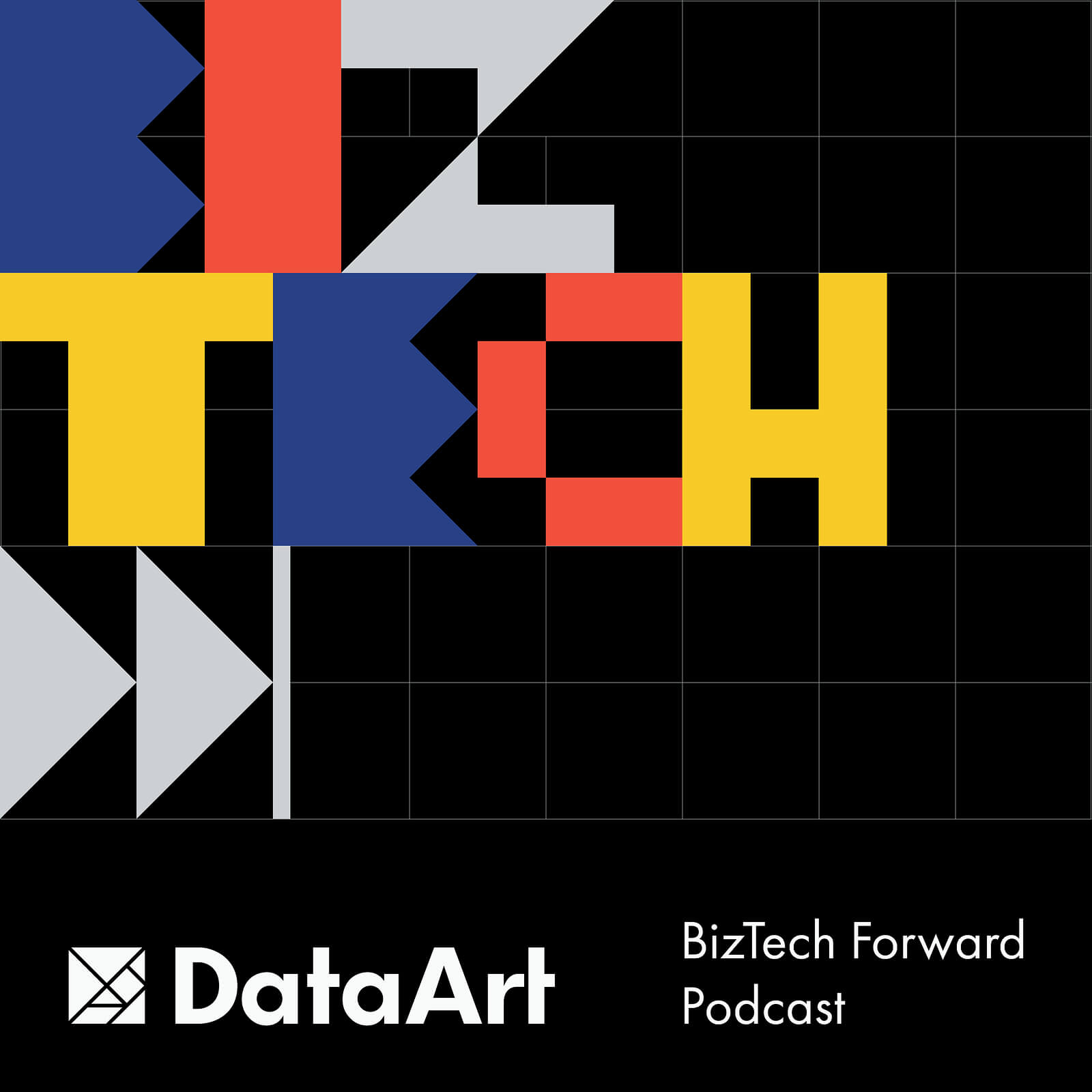
This is a bonus episode of BizTech Forward: Season One Recap. Host Anni takes you through the eight episodes of the debut season, highlighting some of the best moments and setting the stage for season two!
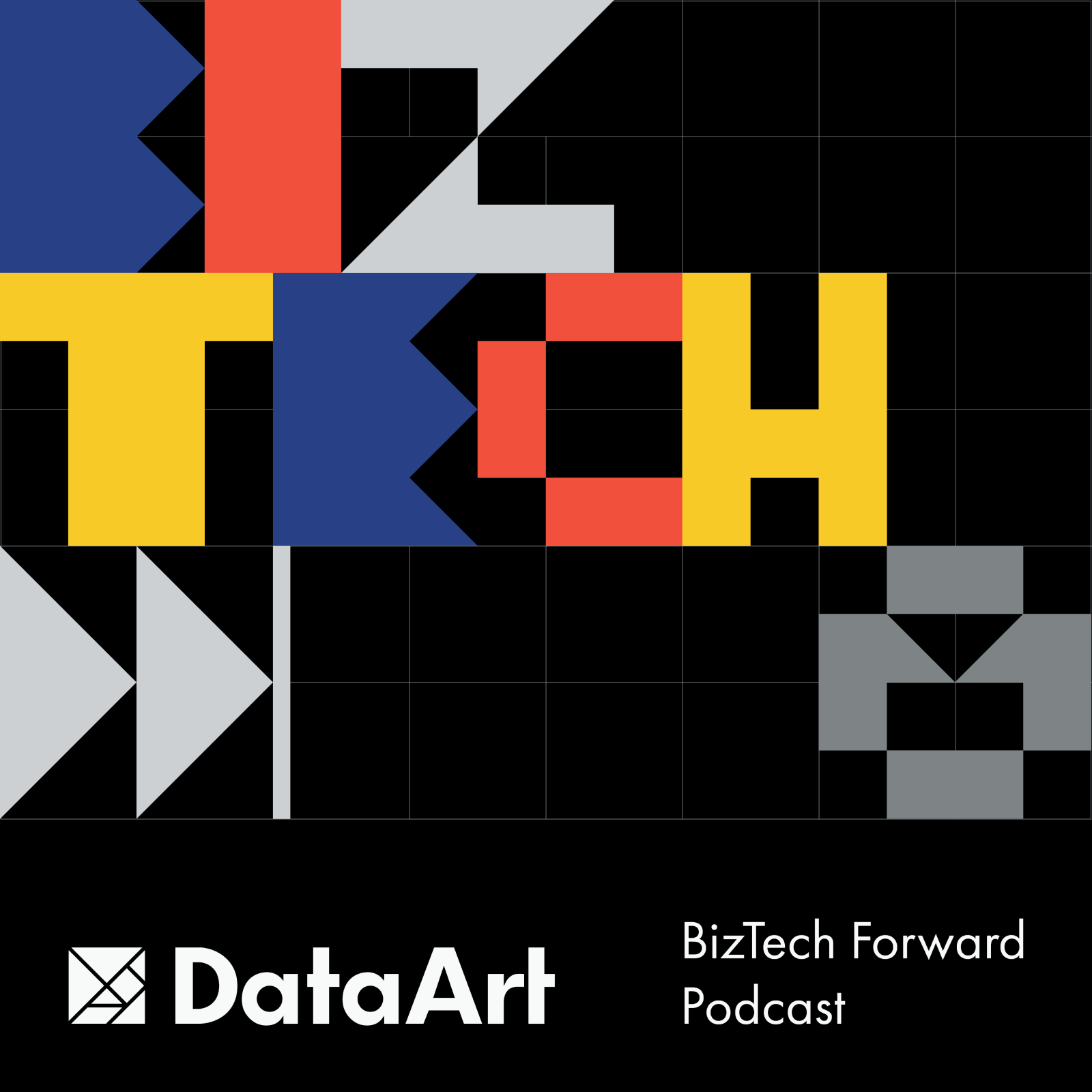
In this episode of BizTech Forward, Anni chats with Scott Rayburn, VP Marketing at DataArt, about how marketing has evolved with the rise of data and technology.
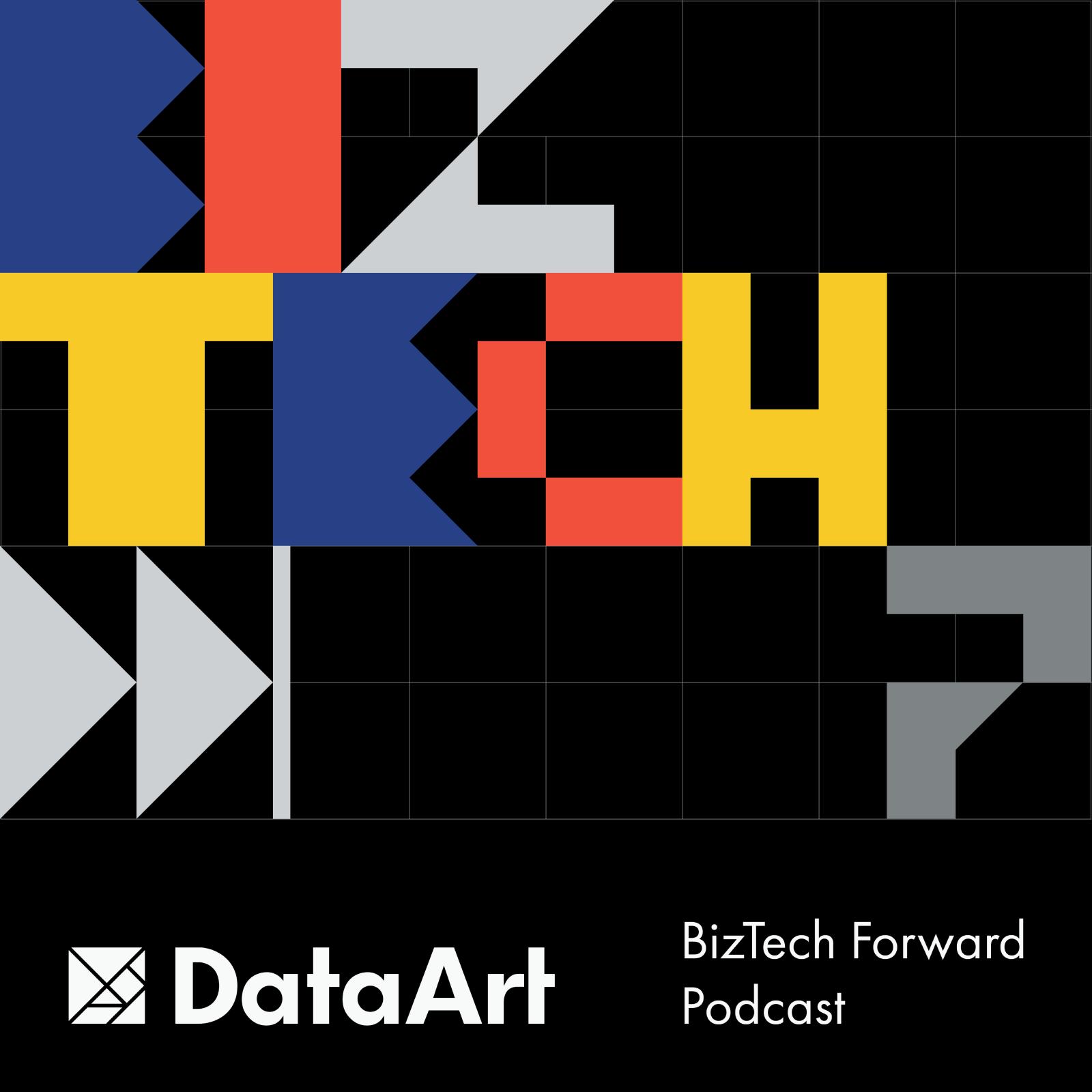
In this episode, Anni chats with Sheetal Kale, Head of DataArt India, about the country’s modern tech views, AI and data, IPO boom, and India’s gravitational pull in global decision-making.
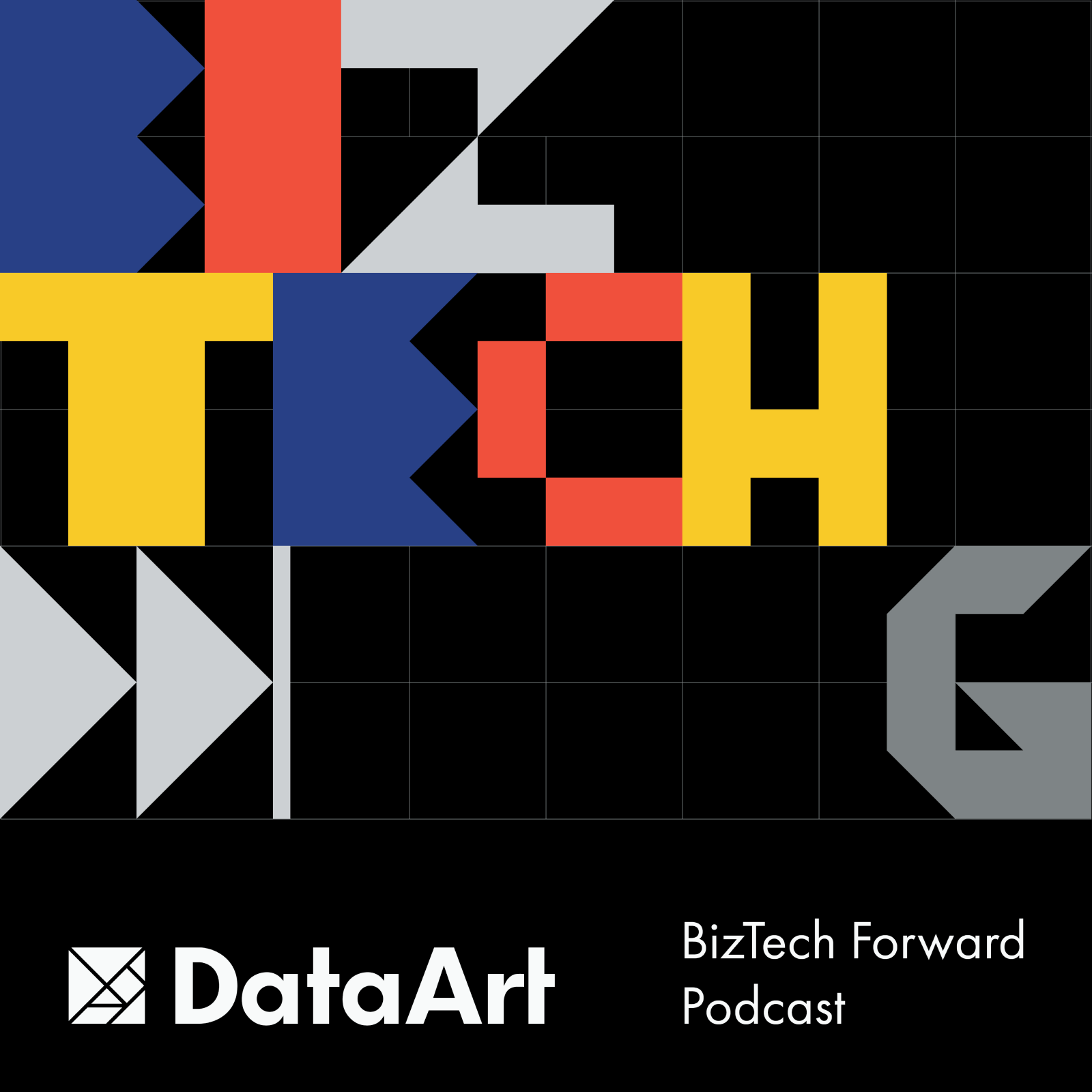
In this episode, we're joined by Tim McMullen, a true veteran in aviation tech, to discuss the latest aviation technology trends from the latest industry conferences and the future of aviation.
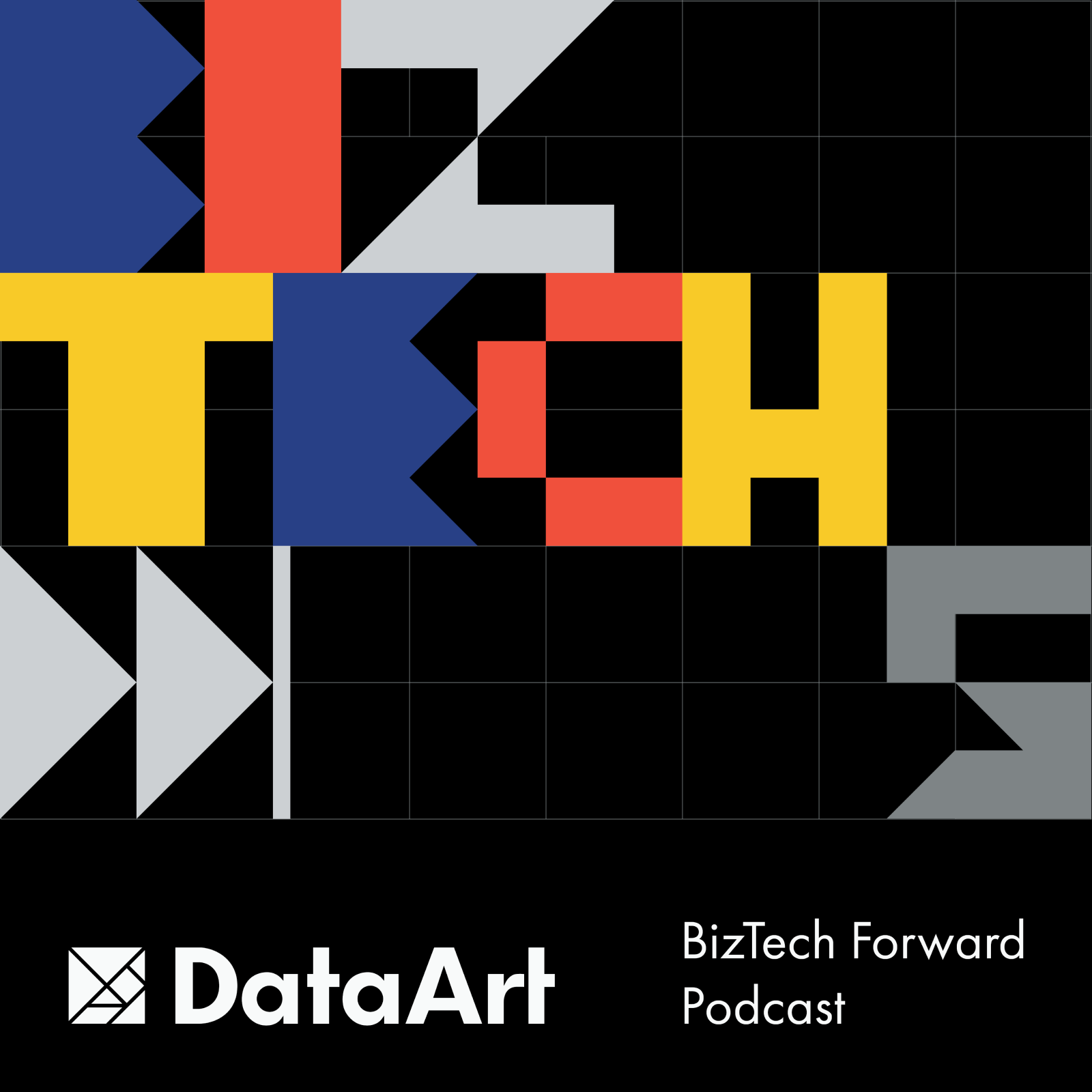
In this episode of BizTech Forward, Anni sits down with Anastasia Rezhepp, DataArt's Head of Design Studio, to talk about the evolution of design processes in the world of UX.
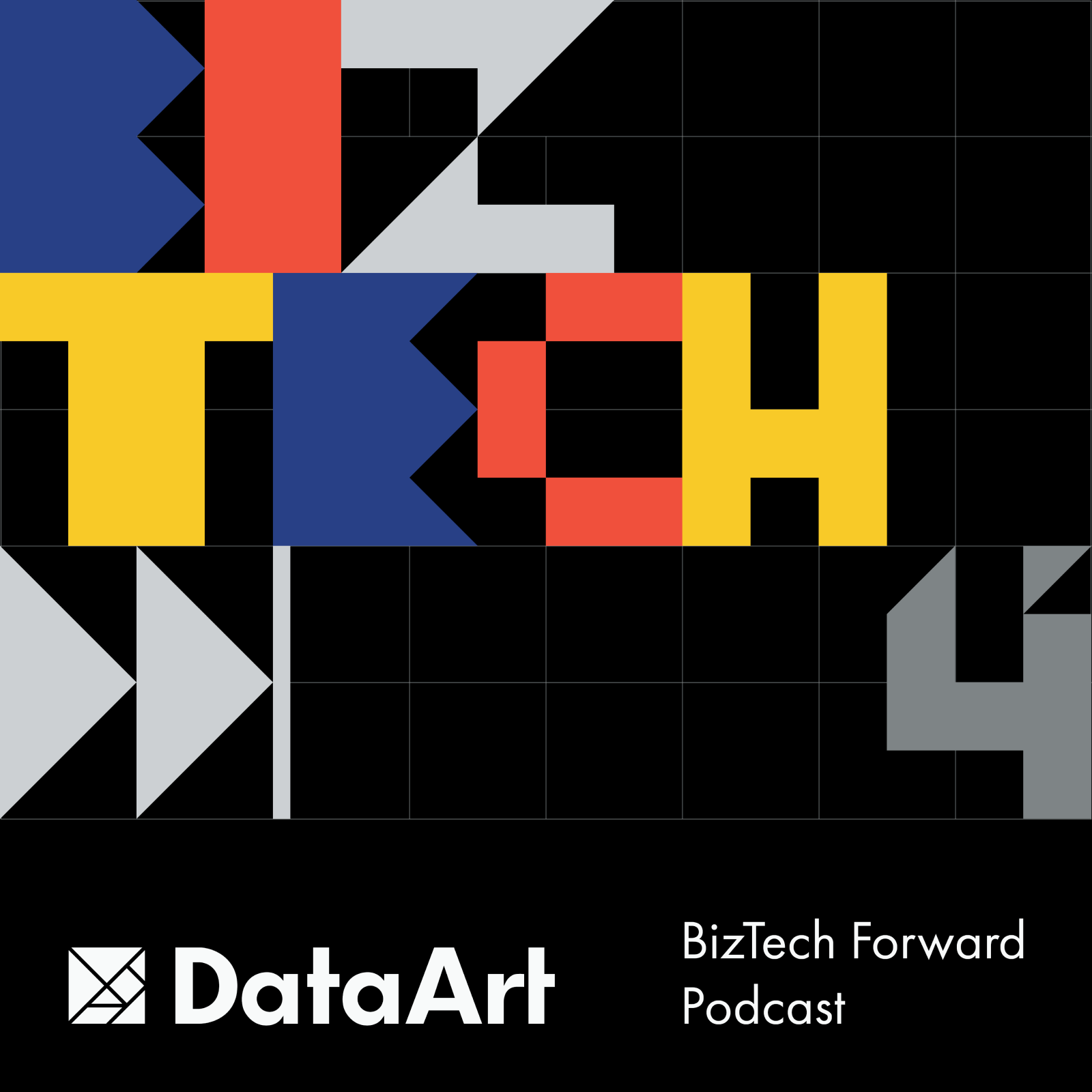
In this episode of BizTech Forward, we chat with Yuri Gubin, Chief Innovation Officer at DataArt, about why data quality is critical for AI success.
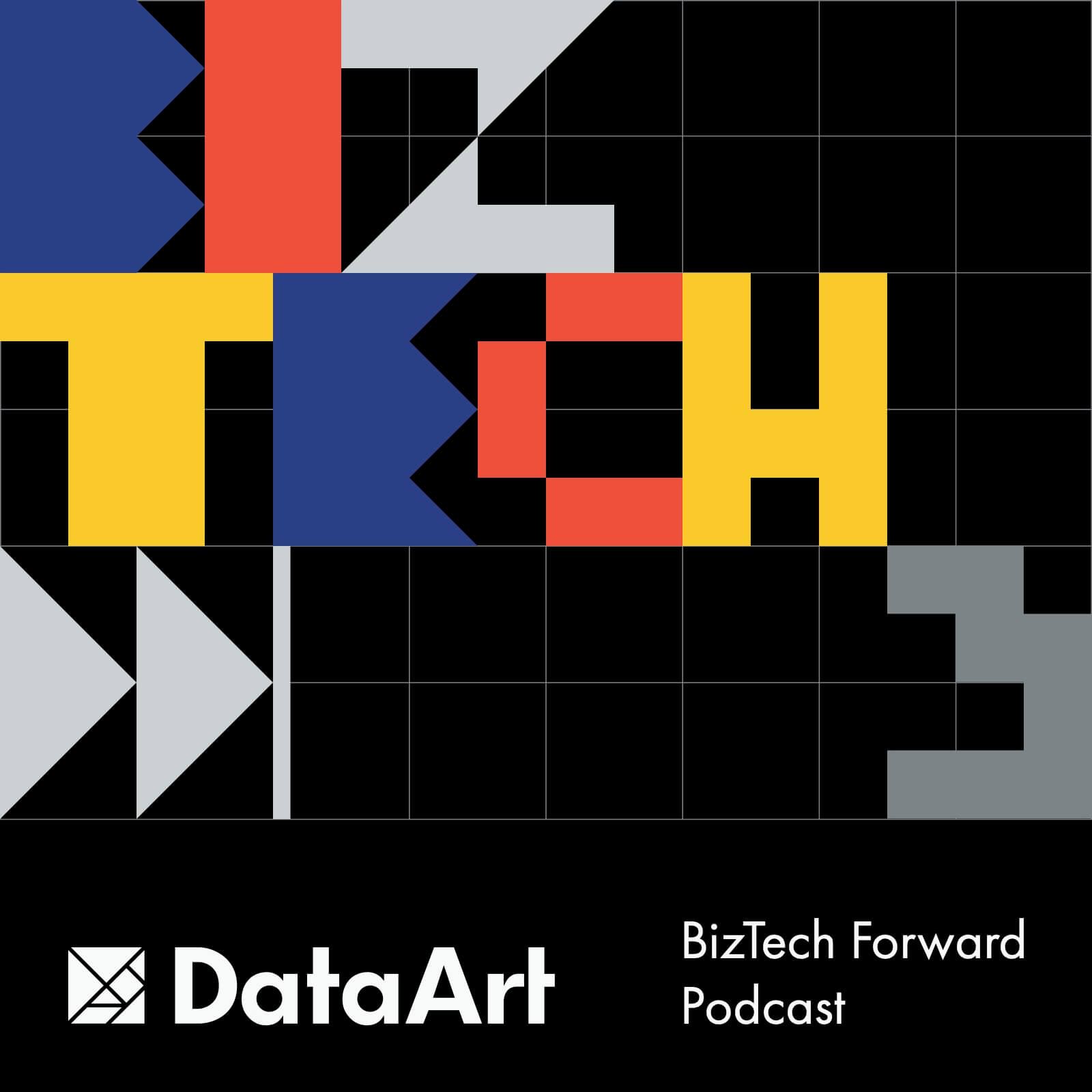
In this episode, we chat with Anna Velykoivanenko, Global Employer Branding Director at DataArt, about the perfect blend of technical know-how and human-centric skills.
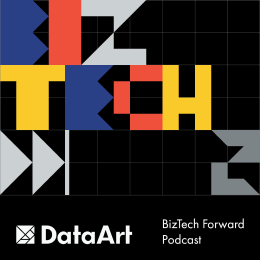
In this episode of BizTech Forward, Anni from DataArt’s Media Relations team chats with Alexei Miller, Managing Director at DataArt, about how businesses can truly measure the value of their IT investments.
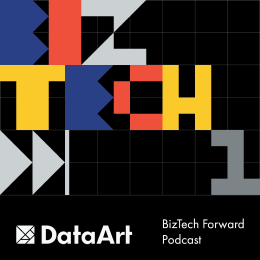
Join Anni Tabagua as we kick off our very first episode with a fascinating topic: AI in Automotive. Our guest is Dmitry Bagrov, the Managing Director of DataArt UK!
We Want to Hear From You!
Reach out to us with any comments, feedback, and questions by filling out the form.

Thank you for contacting us!
We will be in touch shortly to continue the conversation.








